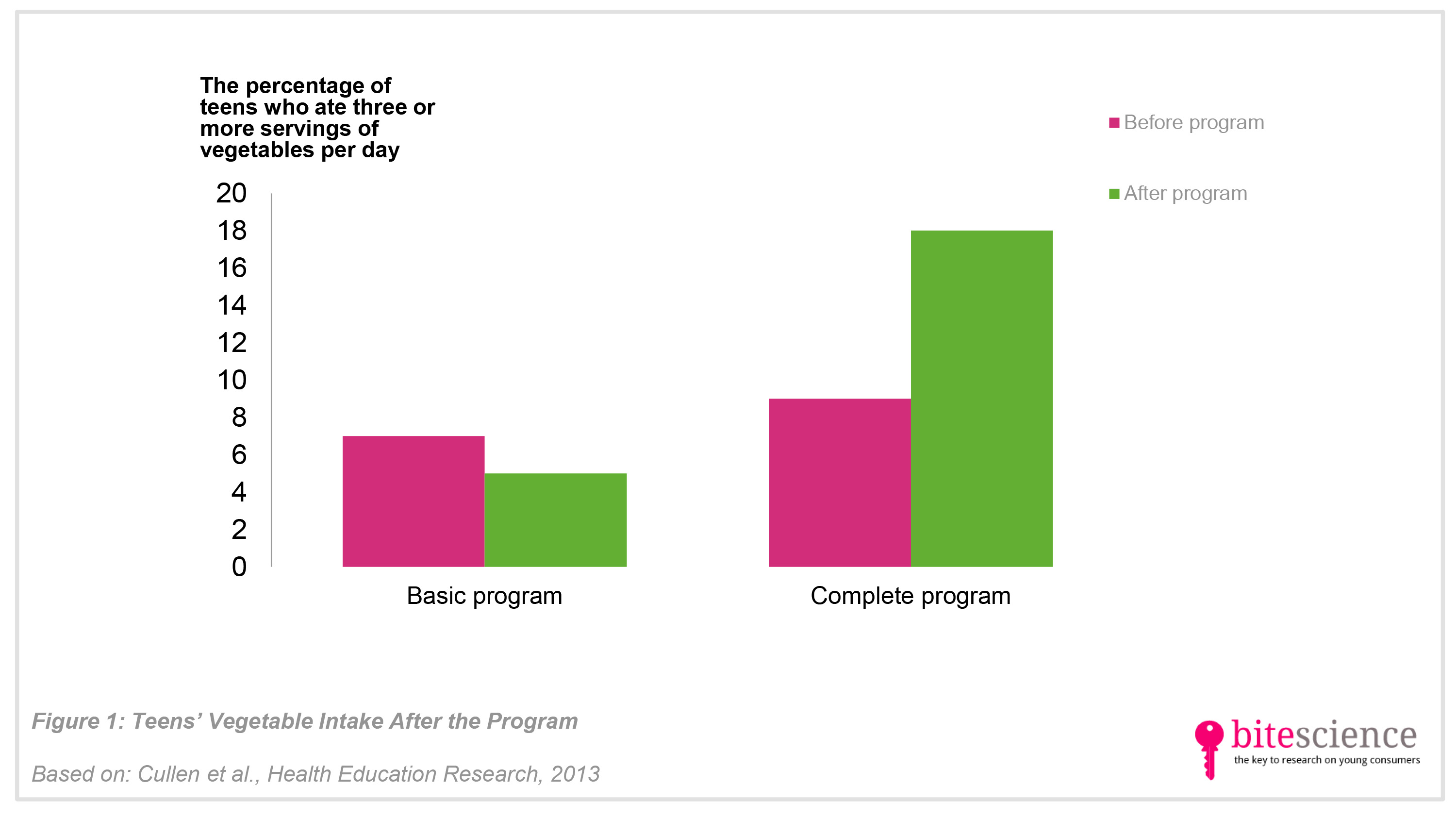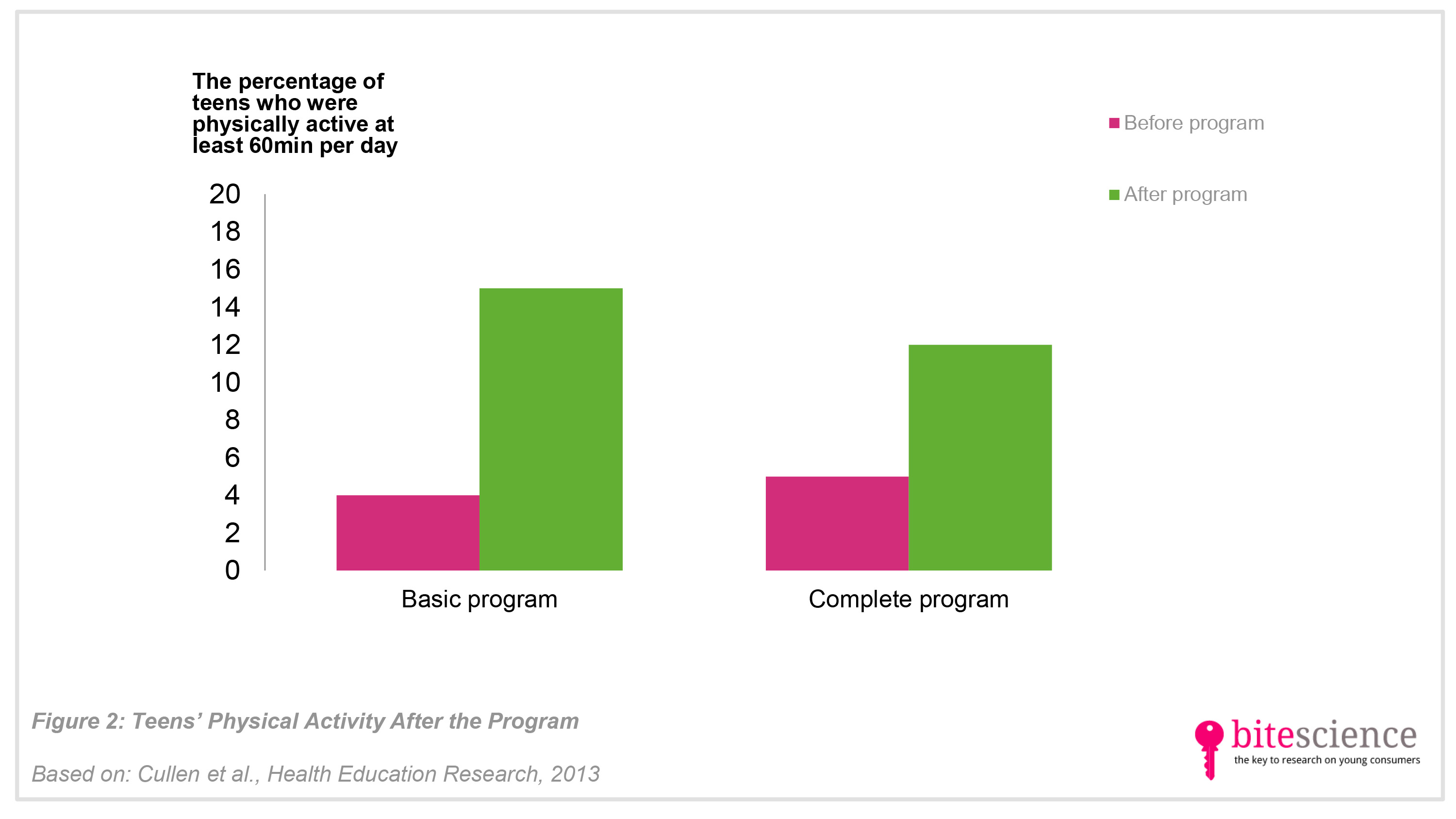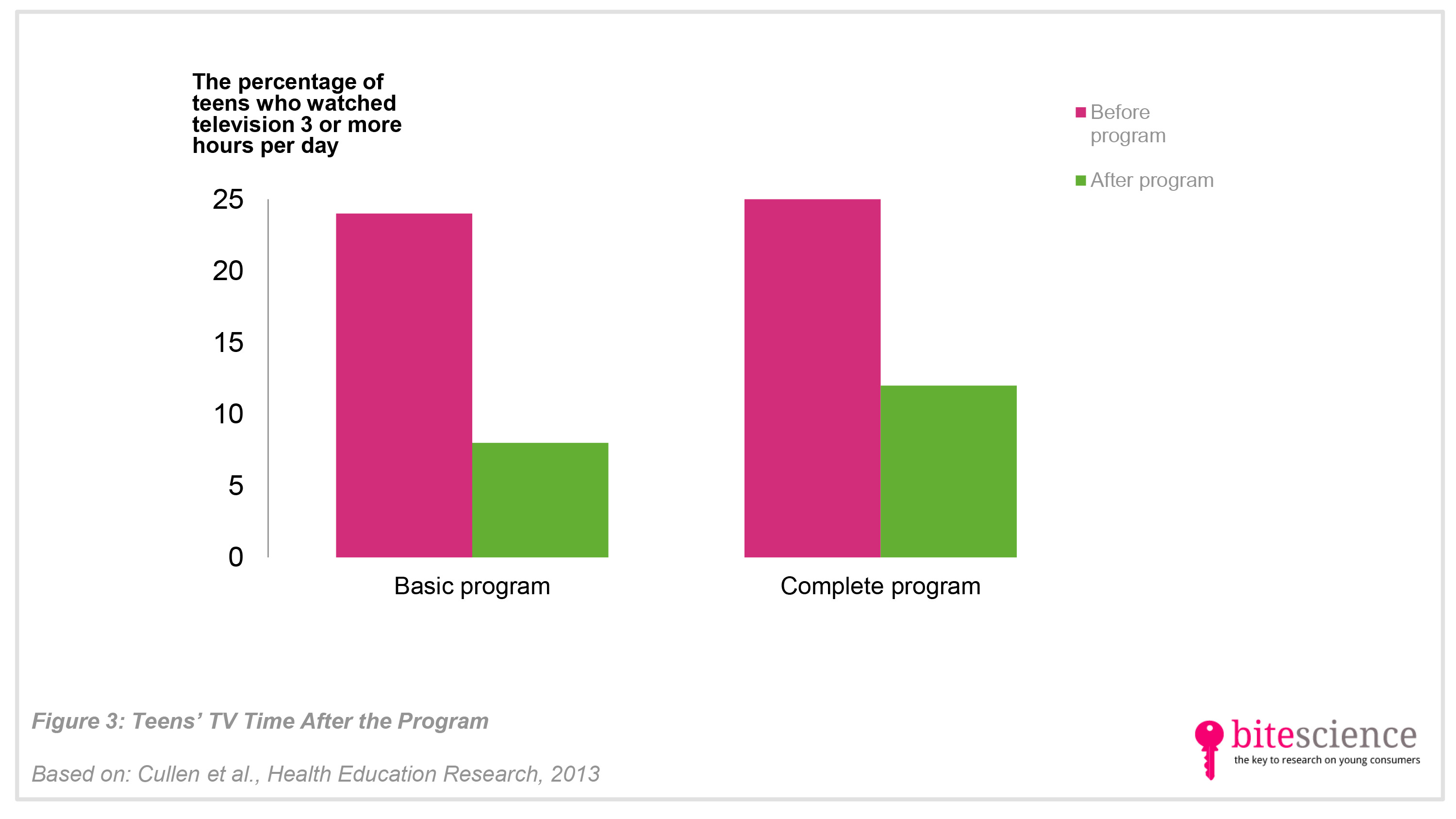
The Impact of Web-Based Health Promotion on Teens’ Health Behavior
The number of teens who are overweight or obese is still rising. Health organizations are trying to stop this by developing a variety of health programs. The newest trend of health programs are web-based health promotion programs. A study in Health Education Research investigated the effectiveness of a web-based program “Teen Choice: Food & Fitness” and showed that these programs can be very successful.
Take aways
- The online health promotion program “Teen Choice: Food & Fitness” improves teens’ vegetable intake (only when following the complete program) and daily physical activity, and reduces their TV time.
- Having access to only some activities of the online health promotion program may be enough to improve teens’ physical activity and reduce TV time.
- These findings highlight the importance and success of web-based health promotion programs for teens.
Study information
The question?
What is the influence of a web-based health promotion program “Teen Choice: Food & Fitness” on teens’ health behavior?
Who?
291 12- to 17-year-olds; 54% girls; various ethnic backgrounds
Where?
United States
How?
At the start of the study teens filled out an online survey that revealed their diet and physical activity. Afterwards they were divided into two groups and asked to log on to the program website “Teen Choice: Food & Fitness”, an online program targeting healthy eating and physical activity.
In one group teens were asked to follow the complete online program, which included setting each week goals to improve their healthy eating and/or physical activity, watch role model video stories addressing healthy eating and physical activity, blog, track their progress, report goal attainment, print their goal sheet, and participate in problem solving.
In the other group teens were asked to follow the basic online program which only included setting a goal each week and printing their goal sheet. Both groups logged on to the program website weekly during 8 weeks. Hereafter, they once again filled out the online survey.
Facts and findings
- In the group who followed the complete program, the number of teens who ate three or more servings of vegetables per day doubled from 9% to 18%. In the group who followed the basic program, this number decreased from 7% to 5% (see Figure 1).
- For both programs, teens reported an increase in physical activity. In the complete program group the number of teens reporting physical activity increased from 5% to 11% and in the basic program group from 4% to 15% (see Figure 2).
- Moreover, the online health promotion program reduced the prevalence of teens’ who watched three hours or more TV per day. This number decreased from 25% to 12% after following the complete program and from 24% to 8% after the basic program (see Figure 3).
- A possible explanation for the improvements among the teens who followed the basic program is that the minimal goal setting activities were enough to improve their physical activity and reduce the time spent watching TV.


